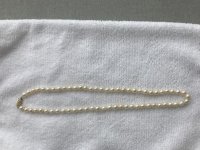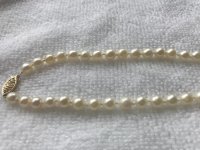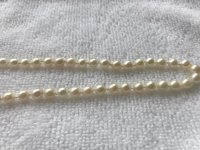west of the moon
New Member
I'm sure this is an easy question, but I'm having a hard time trying to figure out when near-round cultured freshwater pearls came to be commonplace. I have Renee Newman's book and she talks about Biwa pearls with a bead nucleus emerging in the 1930s internationally--would these have been considered a rough equivalent to a classic Akoya necklace? Were such necklaces commonly available in the US? I always think of true Biwa FWP as baroque shaped.



